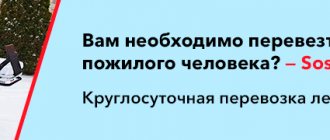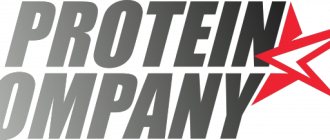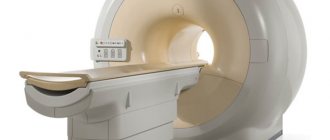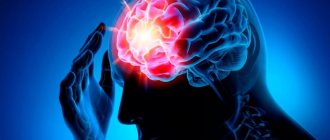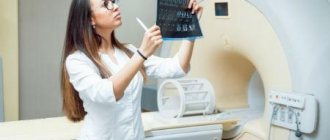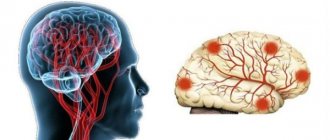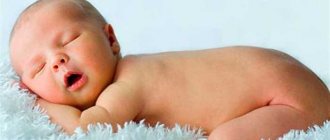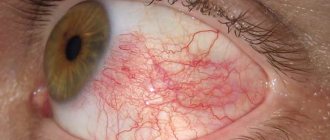Proper nutrition after a stroke
ACVA (acute cerebrovascular accident - stroke) is a pathological condition, in the treatment of which it is very important to undergo a competent rehabilitation process. Meanwhile, rehabilitation specialists are increasingly noting that the recovery of patients with this condition is complicated by an incorrectly selected diet or insufficient adherence to it. If there is a violation of the diet, the supply of nutrients in insufficient quantities greatly reduces the quality of rehabilitation and does not allow some body functions to return to normal. At the same time, the length of hospitalization, as well as the risks of mortality or complications, increase significantly.
In order for the restoration of functions lost due to a stroke to proceed faster, it is important to provide the patient with adequate care, especially in the first days, when the condition is most severe. During rehabilitation, a properly formulated diet plays a significant role so that the patient can receive all the necessary nutrients, vitamin and mineral components.
There is no special diet for people who have suffered a stroke; it is developed individually, based on the patient’s condition, age, general condition and ability to eat, chew and swallow. Some require the use of nutritional mixtures (in the acute period) with a gradual transition to regular food (as their condition improves and functions are restored), including at home under the supervision of caring relatives or nurses.
Principles of nutrition
There are several features of the diet, the observance of which will fill the body with nutrients without burdening it
Let's look at each principle separately to assess the importance of each of them.
Calorie content
It is important that the total daily calorie content of all dishes does not exceed 2500 kcal, of which the following combination of components is considered ideal:
Carbohydrates – 400 g, of which 85% should be complex carbohydrates: cereals, whole grain bread, premium pasta
Carbohydrates saturate the body with energy, but not only their quantity is important, but also their quality. You should avoid sweet and fatty foods, which are also essentially carbohydrates, but do not carry any biological value, only aggravating the patient’s condition, placing increased stress on the liver and pancreas. Proteins – 90 g
It is best to give preference to lean meats: chicken, turkey, rabbit. The high content of collagen and elastin helps strengthen the walls of blood vessels. Fats – no more than 50 g per day. You should consume fats of vegetable origin (butter, fermented milk products), limiting fats of vegetable origin.
On the first day after a stroke, a gentle diet with a calorie content of no more than 1500 kcal is required
On the first day after a stroke, a gentle diet with a calorie content of no more than 1500 kcal is required. Every day the calorie content is gradually increased to 2500 kcal, introducing new products that stimulate regeneration at the cellular level.
Fractionality
Food should be taken in small portions, but often. The number of receptions should be at least 5-6 per day. Fractional meals allow you to reduce the load on the body, eliminate overeating, and also contribute to the gradual resumption of digestion processes. This technique also allows you to establish intestinal motility, normalizing stool and its frequency.
From the editor: Causes, symptoms and methods of treatment of VSD of the hypotonic type
After a stroke, it is important to control stool, since constipation leads to increased pressure during defecation with pushing, which in itself is dangerous
Eat small meals after a stroke
Temperature
We must not forget that the temperature of the food consumed depends on its digestibility and rate of breakdown. The food in the patient's diet should not be too hot. The temperature of the first courses should not exceed 38°C. You should also avoid excessively cold dishes, which lead to vasoconstriction of the gastrointestinal tract.
Consistency
The larger the food that enters the stomach, the longer the digestion process takes. This is especially true for older people who are unable to fully chew solid food, as well as people with facial paralysis
It is important that all products are served in crushed form. To do this, use a blender, which is convenient for turning any dish into a mushy and puree-like state.
Chopped food, given in fractions, is digested several times faster and also does not cause any discomfort during the digestion process.
In the first days after a stroke, it is important that all foods are served in crushed form.
Method and duration of heat treatment
Care should be taken to ensure that the dishes are well prepared, especially for meat and fish. Heat treatment should be carried out for at least 40-45 minutes, which guarantees the destruction of all pathogenic microflora of products.
To reduce the fat content, it is recommended to abandon frying in favor of steaming or cooking dishes in their own juices. A steamer and oven are ideal for this, as well as non-stick pans that allow you to cook without fat.
Steaming is recommended for people who have had a stroke
Do not forget about such an indicator as the severity of the patient’s condition. In case of a major stroke, when a person is in a comatose state, nutrition is provided through a special tube, and special nutritional mixtures are used as food. If the person is conscious, food intake is carried out on the second day after the stroke, when a complete diagnosis of the body’s condition has been carried out and the cause of the attack has been established.
Nutrition problems after cerebral stroke
Experts highlight certain problems and features of caring for people who have had a stroke:
- Possible difficulties with chewing and swallowing food;
- if the mobility of the hand is affected, it may be difficult to use a fork or spoon;
- Appetite may worsen, moodiness and selectivity in eating may occur;
- memory impairment is possible - the patient forgets what and when he ate.
- Many patients are prescribed strict bed rest due to the threat of recurrent stroke, general serious condition, and partial impairment of motor functions.
Patients after a stroke need a diet that will help quickly restore lost body functions, while also providing the necessary substances for life (including in cases of impaired swallowing reflex and chewing process).
Diet after a hemorrhagic stroke
After a course of drug treatment, patients should eat large amounts of vegetables and fruits, which contain magnesium. If the patient suffers from high blood pressure, then the use of salt should be completely avoided. Blood pressure should be monitored at least 3 times a day. Nutrition after a stroke should be balanced.
An approximate recipe for health is quite simple: no alcohol, tobacco and fatty foods. Weight should be normal. If the patient is overweight, then you must first bring the weight back to normal, eliminating everything salty, smoked, fatty and fried. Eat more fruits and vegetables, steamed chicken and fish.
To clean blood vessels, it is good to eat sea fish and seaweed at least once a week. Sea kale is rich in iodine; it perfectly cleanses blood vessels and reduces the risk of a hemorrhagic stroke.
Many patients add some traditional medicine to their food. Their recipes are extremely simple. You need to buy apple cider vinegar, but natural, in a glass bottle. One tablespoon of honey is diluted in a glass of warm water and a tablespoon of apple cider vinegar is added; a glass of the solution should be drunk in the morning on an empty stomach.
Nutrition guidelines for stroke: food, calories, fluid
When developing nutrition for bedridden patients after a stroke, the menu should be as balanced as possible in terms of calories, taking into account age and inactivity, and limited in the amount of table salt (so as not to provoke an increase in pressure). In addition, the food should be light so that there is no overload of digestion, but at the same time the body is provided with all the necessary nutrients. It is also important to ensure that the patient receives a sufficient amount of fluid, proteins with physiological consumption of fats and carbohydrates, which will help prevent thrombosis and the progression of atherosclerosis.
It is also important to know what foods are allowed and prohibited for an elderly person after a stroke. Helpful after a stroke:
- fish (low-fat) and various seafood;
- lean meat, poultry;
- egg white;
- vegetable oils;
- low-fat dairy products;
- dried fruits and nuts;
- dishes made from whole grains (porridge, side dishes);
- fresh fruits, ripe berries;
- fresh, boiled, stewed vegetables;
- a lot of greenery;
- drinking water, green tea, compotes, natural fruit drinks and juices diluted with water.
Not recommended after a stroke:
- fatty foods (lard, fatty meat, lard, bacon);
- black tea or coffee;
- marinades, pickles, spicy dishes;
- roast;
- sweets, candies, chocolate;
- alcohol.
In addition, it is important for patients to have a complete supply of B vitamins, colecalciferol (vitamin D), magnesium, potassium and iron.
And it seems that all these problems can be solved simply by a balanced diet. But the problem is complicated by the condition of people who have suffered a stroke. They often experience serious damage - paresis, problems swallowing food, impaired coordination and other similar consequences. As a result, regular food is not always available to such patients. Moreover, due to the transferred condition, a depressive background often develops, appetite and the desire to make efforts to process the necessary food disappear. As a result, doctors have to use tube feeding (the nutritional mixture is administered through a special tube) or siping.
The second nutrition option - siping - is relevant if the patient is able to swallow on his own, so regular nutrition in combination with specially developed products that cover all the needs associated with useful substances is suitable for him. That is, the patient eats regular food and at the same time drinks drinks rich in beneficial elements. Or he drinks exclusively nutritious mixtures.
Tips for choosing products
A stroke not only limits mobility or impairs mental activity due to damage to an area of the brain. After an attack, the defenses are reduced, and the body becomes vulnerable not only to repeated stroke, but also to other neurological or cardiovascular disorders. And eating after a stroke can either speed up recovery or increase the risk of possible complications. Let's look at which foods help you recover faster, and which foods you should forget about.
Healthy food
After an ischemic attack, a person has limited mobility and often has problems with bowel movements. A diet after a stroke should not only strengthen blood vessels, the heart and the nervous system, but also prevent constipation. It is useful for stroke patients to eat:
- greens (except sorrel and spinach);
- pumpkin crops;
- eggplant;
- cabbage (all varieties);
- onion;
- Bell pepper;
- beet;
- carrot;
- tomatoes;
- lentils;
- porridge (if you are prone to obesity, limit semolina and corn grits);
- vegetable broth soups;
- low-fat dairy products;
- wholemeal bread;
- not rich pastries;
- honey;
- sunflower oils;
- nuts;
- seeds;
- honey;
- green tea.
Be sure to include meat in the patient's diet. Beef and lamb are allowed for meat, and turkey and chicken for poultry. But meat and poultry should be without fat.
It is necessary to add fish and seafood to the diet. Seafood contains many vitamins and Omega-3 fatty acids, which prevent the formation of atherosclerotic plaques.
Don't forget about fruits. Often, the patient’s relatives clarify in detail whether grapes or pomegranates can be eaten, and sometimes they simply bring a parcel containing permitted and forbidden fruits.
In order not to harm a person, let’s look at what fruits you can eat after a stroke:
- apples;
- pears;
- nectarines;
- peaches;
- citrus;
- pomegranate;
- mango;
- kiwi;
- avocado.
We should not forget about berries. Patients are allowed to eat:
- currants;
- gooseberry.
What you shouldn't eat
For a cerebral stroke, the diet allows the inclusion of a small amount of the following foods:
- fish roe;
- fatty fish;
- spinach and sorrel;
- legumes;
- egg yolk;
- grapes and raisins.
Doctors allow the inclusion of these products in small quantities after a cerebral stroke, but advise doing this as rarely as possible.
It is also recommended to completely remove salt from your diet. If this is not possible, then reduce consumption to 3 g/day.
From the editor: Causes and consequences of a stroke on the right side of the brain
What food is prohibited?
The diet for stroke patients excludes the consumption of the following products:
- canned food;
- store-bought semi-finished products;
- pickles and pickles;
- smoked meats;
- fatty broths;
- radish;
- radish;
- mushrooms;
- baked goods;
- butter confectionery creams;
- chocolate;
- drinks and sweets with cocoa;
- hot seasonings and spices;
- cheeses;
- full-fat milk and products made from it;
- pork;
- offal;
- sausages;
- animal fats.
Often patients or their relatives ask whether they can drink coffee. It is forbidden. Strong black tea and carbonated drinks are also prohibited.
If you answer which fruits are prohibited during a stroke, then only bananas are prohibited.
If the patient is bedridden, then it is relatively easy to exclude from the diet what cannot be eaten after an ischemic stroke. To do this, it is enough to cook separately and feed in bed.
It is much more difficult to prove to a walking person that not all food can be eaten after a stroke. This causes attacks of resentment and often demonstrative refusal of healthy food. This often occurs in older people.
If in a hospital it is relatively easy to maintain proper nutrition during an ischemic stroke, then after discharge, at home, it becomes difficult. In order to avoid unnecessary conflict, doctors advise not to keep junk food at home, but to eat the same dishes as the stroke patient. Doctors say that the menu for ischemic stroke contains the necessary nutrients. And if you want to eat a banana or sausage, you can do it at work without injuring a sick relative.
Features and benefits of special mixtures for patients after a stroke
Special mixtures are nutritious and balanced food products in a drinking format. They are completely ready for use and balanced in all necessary components (contain the required amount of protein, slow carbohydrates and all mineral and vitamin components).
Moreover, everything you need is in small 200 ml bottles. The essence of sipping nutrition is that such mixtures can be consumed either through a straw, or in the usual way, but in small sips (within half an hour), which is quite convenient for a patient undergoing rehabilitation. Such mixtures replace a large number of products and are a quality addition to the menu of a sick person.
The Nutricia company, one of the leaders in the field of specialized nutrition, has just developed products for feeding people undergoing rehabilitation. As a supplement to your regular diet, you should drink from one to three bottles of the Nutridrink mixture per day. If the patient cannot eat regular food, it can be completely replaced with Nutridrink - but in the amount of 5-7 bottles per day. To ensure that special nutrition evokes only pleasant sensations, patients are offered several flavors: vanilla, chocolate, banana and strawberry.
Doses of special nutrition must be further discussed with a nutritionist and attending physician - they are prescribed individually, taking into account the personal calculation of nutrients for a particular person. With the correct calculations, Nutridrink will provide the body with everything it needs and will contribute to better and faster rehabilitation after a stroke.
How to prevent a stroke?
First of all, you need to adhere to a stroke diet, eat foods low in salt, fat and cholesterol. Yandex.Direct Stroke. Effective treatment. How to quickly overcome the disease without leaving home, spending only 12 minutes a day. There are contraindications. Consult your doctor. It is also necessary to normalize your weight, exercise regularly and take a blood test for cholesterol. The diet should have enough potassium, magnesium, vitamin E and essential fatty acids. Women who have already had a stroke should not use birth control pills in the future.
Authorized Products
The patient's nutritional diet is limited as follows:
- Vegetarian dishes. Basically, these are soups prepared with potatoes, cabbage, carrots and other vegetables. You are allowed to add cereal to the soup. The soup can be milk or fruit; cold beetroot soup is recommended for consumption. The soup is seasoned with non-acidic sour cream and herbs. If your doctor allows it, you can cook soup with meat broth, but only several months after the stroke.
- Boiled poultry meat. It should be lean, low-calorie chicken or turkey. Fillet boiled in unsalted water is best. Meat contains a large amount of proteins and is very healthy.
- Lean meats. You can eat beef, veal and rabbit. Before cooking, cut off fat and tendons, anything that increases cholesterol levels and calories. The meat must be boiled.
- Low-fat fermented milk products. The fat content of milk and cottage cheese should not exceed 10%. Cottage cheese is mixed with cereals, carrots and fruits. Cheese can be eaten only in limited quantities and only low-fat varieties;
- Chicken eggs. The eggs are boiled soft-boiled, the omelet is steamed. You can only eat 1 egg per day.
In addition, patients are allowed the following products:
- pasta;
- cereal;
- biscuits and soft biscuits;
- all types of vegetables;
- vegetable caviar;
- jellied fish;
- dried fruits, as well as fresh fruits and berries;
- compote, jelly, jam;
- green tea;
- still water;
- cocoa;
- honey.
All dishes should be consumed in limited quantities in accordance with the individual regimen developed by the doctor. Food must be prepared independently; it is not advisable for the patient to eat semi-finished products, again due to the calorie content and high cholesterol content.
Diet after a stroke for every day
The severity of a patient's condition after a stroke varies. Therefore, if a patient has lost chewing function after an attack, he is given nutrition through a catheter. For this, either specialized mixtures or nutrients are used.
Patients with less severe pathology feed on their own. But if a person is fed the same type of food, even if it is black caviar with pineapples, it becomes boring, and such an approach to nutrition will not be beneficial for the human body. Therefore, the diet of a stroke patient should be varied; fortunately, the diet after a stroke for every day allows for the opportunity to eat not only healthy, but also varied and tasty.
Diet for stroke is not a temporary measure that, after restoration of health, can be subsequently ignored. The recommendations it carries should forever become a habit and become an integral part of your lifestyle. People who introduced it into their daily life protected themselves from many health problems that are associated with disturbances in the functioning of the cardiovascular system. Only a careful attitude towards yourself and your health, giving up bad habits, “healthy eating”, and a healthy lifestyle will give you the opportunity to feel great, even if you are far beyond...
Why is therapeutic nutrition better than regular nutrition?
A special diet is required to feed stroke patients. Food should be easily digestible, but also contain the nutrients the body needs. In this case, due to impaired swallowing function, food should be pureed or ground until smooth.
At each meal, food should be the same consistency and optimal temperature.
In addition to proteins, fats and carbohydrates, a serving should contain vitamins and microelements. It is almost impossible to provide the required amount of vitamins and microelements in regular food, so they need to be purchased at the pharmacy and added to food.
It is also important to remember about the rapid infection of warm pureed food: a mixture prepared independently is very quickly subject to colonization by bacteria. For a healthy person, they are usually not dangerous, but for a weakened body recovering from a stroke, they can cause harm. Therefore, you cannot prepare a lot of food at once for several days in advance. You need to constantly prepare a fresh portion.
Liquid mixtures for therapeutic nutrition meet all requirements. They are created in accordance with modern scientific recommendations, taking into account the needs of different categories of patients. Mixtures for therapeutic nutrition are available in liquid, ready-to-use form and are easily dosed, which is an additional advantage compared to traditional food. They contain high-quality proteins, fats, carbohydrates, and the optimal amount of all necessary vitamins and microelements. This allows them to be used as an additional or sole source of nutrition in patients with strokes.
Both the patient himself and his relatives can be sure that the use of this type of nutrition will allow them to quickly cope with the disease.
Dr. BOSTI recommends nutritional therapy Nutricomp from BBraun
Why BBraun?
BBraun offers a complete supply of clinical nutrition technology, including a wide range of Nutricomp enteral nutrition and parenteral nutrition products, infusion technology and delivery systems for the administration of enteral and parenteral nutrition, medical devices for central and peripheral venous access and tubes for the administration of enteral nutrition, care products for vascular access and stomas, information and technical support (including equipment maintenance), information materials for patients.
